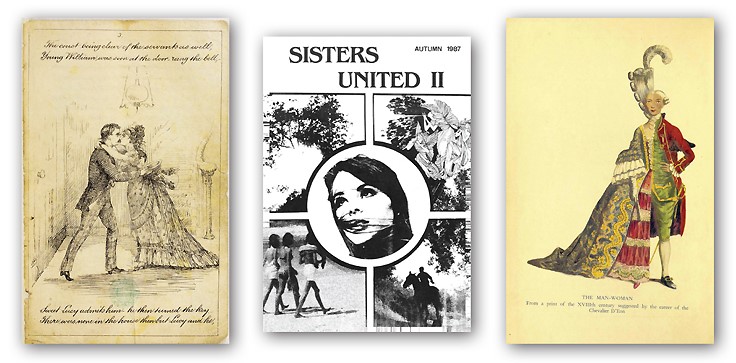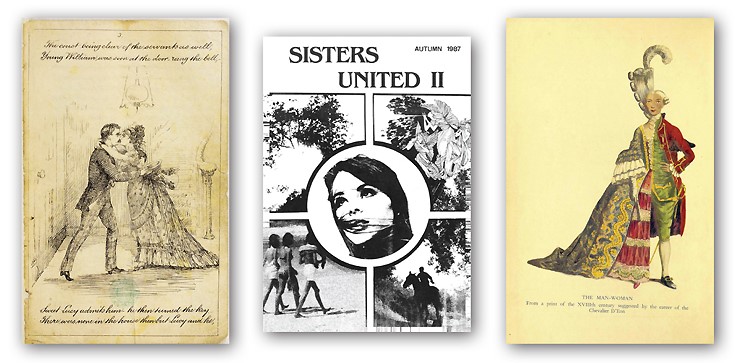| Originally published by Library Journal, written by Jennifer A. Dixon |
Online databases have transformed the ways researchers use materials, in particular primary sources. Publishers’ approaches to gathering and organizing online collections are diverse, but all require forming relationships with libraries and archives and considering how researchers use their platforms.
Recently, Library Journal spoke to several publishers, including Gale, about how recent database projects came to fruition. Here’s how Gale built the Archives of Sexuality & Gender:
The Archives of Sexuality & Gender present millions of documents that reflect LGBTQ history and the history of research into sex, sexuality, and gender. Documents have been sourced from numerous libraries and archives, including the New York Public Library, the Canadian Lesbian and Gay Archives, and the Lesbian Herstory Educational Foundation. The latest addition to the archives, Sex and Sexuality in the 16th Through 20th Centuries, is an expansive collection of books, monographs, and manuscripts, many of which were previously unavailable for public view. From conception to quality control, the development of the latest addition to the Archives of Sexuality & Gender has been going on for the better part of two years.
According to Phil Virta, senior acquisitions editor of the Archives of Sexuality & Gender, coming up with an idea for a database that resonates with customers is just one element. Identifying potential institutions and archival collections to populate it is important too, he says. “It involves a lot of creativity, because you really want to find something that tells a story.” Editors must identify more material than they need, since “not every one of them is going to come through and sign an agreement. What comes through is what actually builds the archive.”
Gale had already formed a relationship and developed a collection with the Kinsey Institute, known for decades as the leading research institution on human sexuality and relationships. Virta knew the Kinsey Institute collection should be the basis of the latest archive installment, and so pursued other collections that would be complementary: the New York Academy of Medicine’s collection of rare and unique books on gender, sex, and sexuality and the British Library Private Case collection, consisting of books removed from the library’s public collection on grounds of obscenity.

There are more than 5,000 books in the resulting collection: 2,500 from the British Library, around 1,500 from the New York Academy of Medicine, and about 1,000 from the Kinsey Institute. None of these materials were previously digitized or widely accessible to scholars.
“In general, the collections I work with are hard-bound paper, periodicals, magazines,” says Virta.
“Librarians and archivists shape projects like Archives of Sexuality & Gender by identifying the collections that are most consulted at their institutions, or that have the most research impact. I rely on the knowledge and expertise of librarians and archivists to help me select collections that are the best representatives of a particular subject or theme.”
Phil Virta, senior acquisitions editor of the Archives of Sexuality & Gender
For instance, Donald McLeod, head of book and serials acquisitions at the University of Toronto Libraries, who was part of the advisory board of the Archives of Sexuality & Gender from 2015 to 2019, encouraged Gale to include more international content, in particular from a Canadian archive, to make the collection “a much more wide-ranging and useful product for scholars.”
Bringing together diverse collections means that the process for bringing each institution’s materials onto the Gale platform will be different. Says Seth Cayley, vice president of Gale Primary Sources, “We see ourselves as partners with these institutions—we talk to the libraries about their needs, and how physical objects are going to be treated after digitization. Digitization often creates a lot of interest in patrons seeing the physical objects.”
For example, the Searchlight Archive at the University of Northampton, a partner in Gale’s Political Extremism & Radicalism in the Twentieth Century posted on Twitter that the archive had “seen a big increase in overseas usage this year, perhaps in part due to that exposure we got” from digitization. Cayley notes that such a surge in interest can be “a double-edged sword if a library isn’t equipped to deal with it.” He adds, “In some libraries, digitization is the reason for them to take something off shelves, if it is too delicate.”
After an agreement that works for both Gale and the materials’ home institution is finalized, the next step is to arrange a schedule with a scanning or digitization vendor. Gale scans on-site in some cases and ships materials off-site in others. Scans go to another party for quality assurance. Next, the Gale content team ensures that metadata is applied. The final result has a similar look and feel to other Gale Primary Sources archives so that researchers will be confident in searching across archives.
To see how other publishers build databases, subscribe to Library Journal >>
Adidas Yeezy Boost SPLY – 350 V2 OFF-WHITE white men shoes
